The best standard zoom lenses in 2025: fast everyday zooms
Here's my pick of the very best standard zooms to replace your kit lens for Canon, Nikon, Sony, Fujifilm, L-mount, and MFT cameras
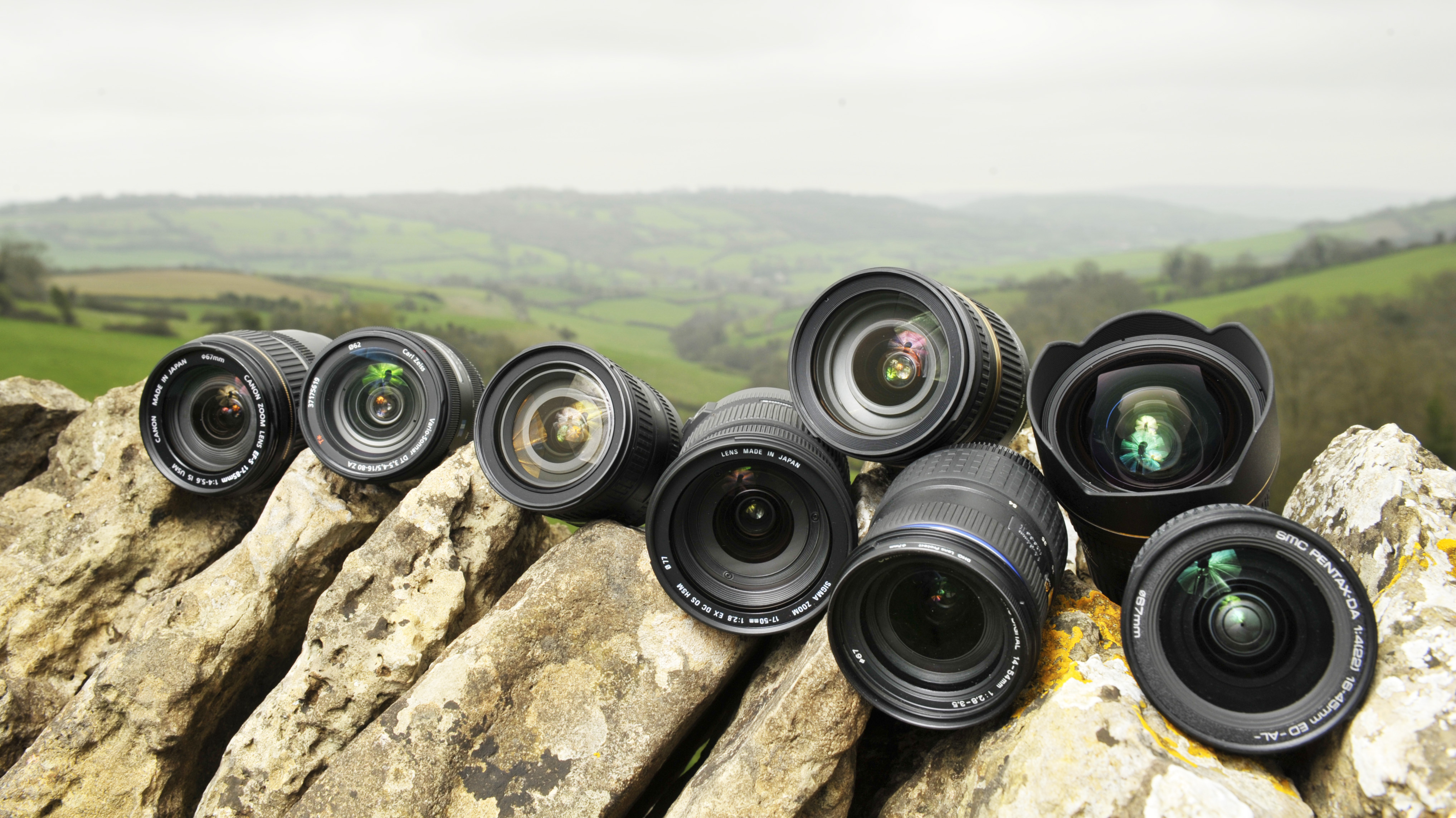
A standard zoom lens is one of the most versatile tools a photographer can carry in their arsenal. While many cameras come with a kit standard zoom lens in the box, these tend to have a fairly slow and variable maximum aperture. So for this guide I've hand-picked the best 'fast' standard zooms, with a constant maximum aperture of f/2.8 – or even faster.
While there isn't an official ruling on what constitutes a standard zoom, it's generally agreed to cover any lens that roughly covers the range of around 24-70mm on a full-frame camera, or the equivalent focal length for cameras with a smaller sensor. However, some manufacturers have pushed this in both directions, producing lenses that extend a little wider, longer, or both.
I've picked out the best standard zooms for all the major mounts and systems, including both mirrorless and DSLR options, so let's dive right in – but if you're looking for something on either side, check out my guides to the best wide-angle lenses and the best telephoto lenses.

Matthew Richards is a photographer and journalist who has spent years using and reviewing all manner of photo gear. He is Digital Camera World's principal lens reviewer, and has personally tested the standard zooms on this list.
The Quick List

Best Canon mirrorless lens
While it's expensive, this professional 'trinity' zoom hits all the right notes for users of full-frame RF cameras. Its build quality and optical performance are simply top of the class.

Best Canon DSLR lens
A pro-grade lens for APS-C cameras? This isn't something Canon has done a lot, but it's welcome here, especially for the extensive APS-C DSLR lineup.
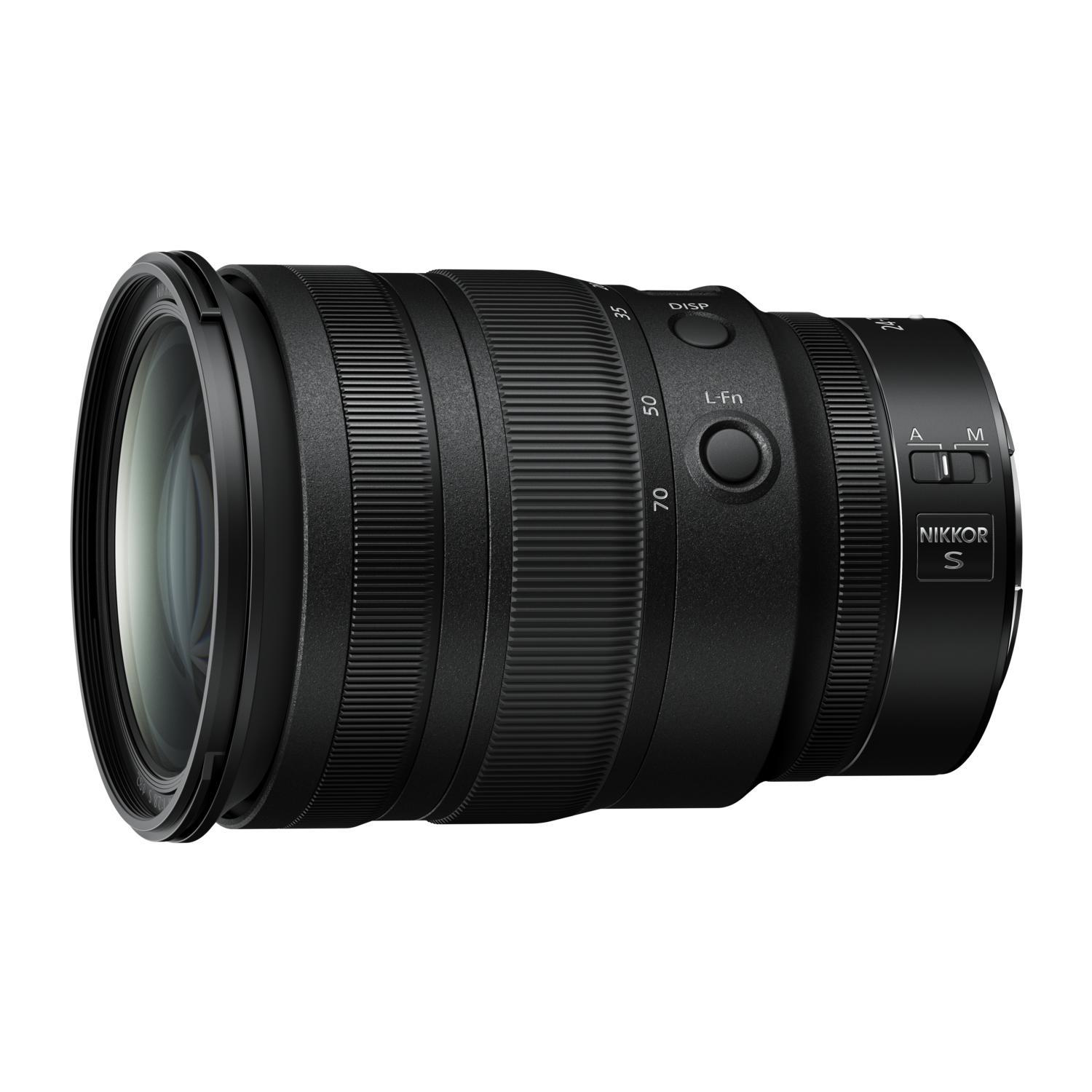
Best Nikon mirrorless lens
One of Nikon's top-flight S-line lenses, this standard zoom is a sublime option for users of Nikon's Z-mount cameras. The handling is good, the image quality is even better.

Best Nikon DSLR lens
Though its weight clips over a kilogram, the Nikon AF-S 24-70mm f/2.8E ED VR is an exemplary professional lens for any Nikon DSLR user with a strong back.
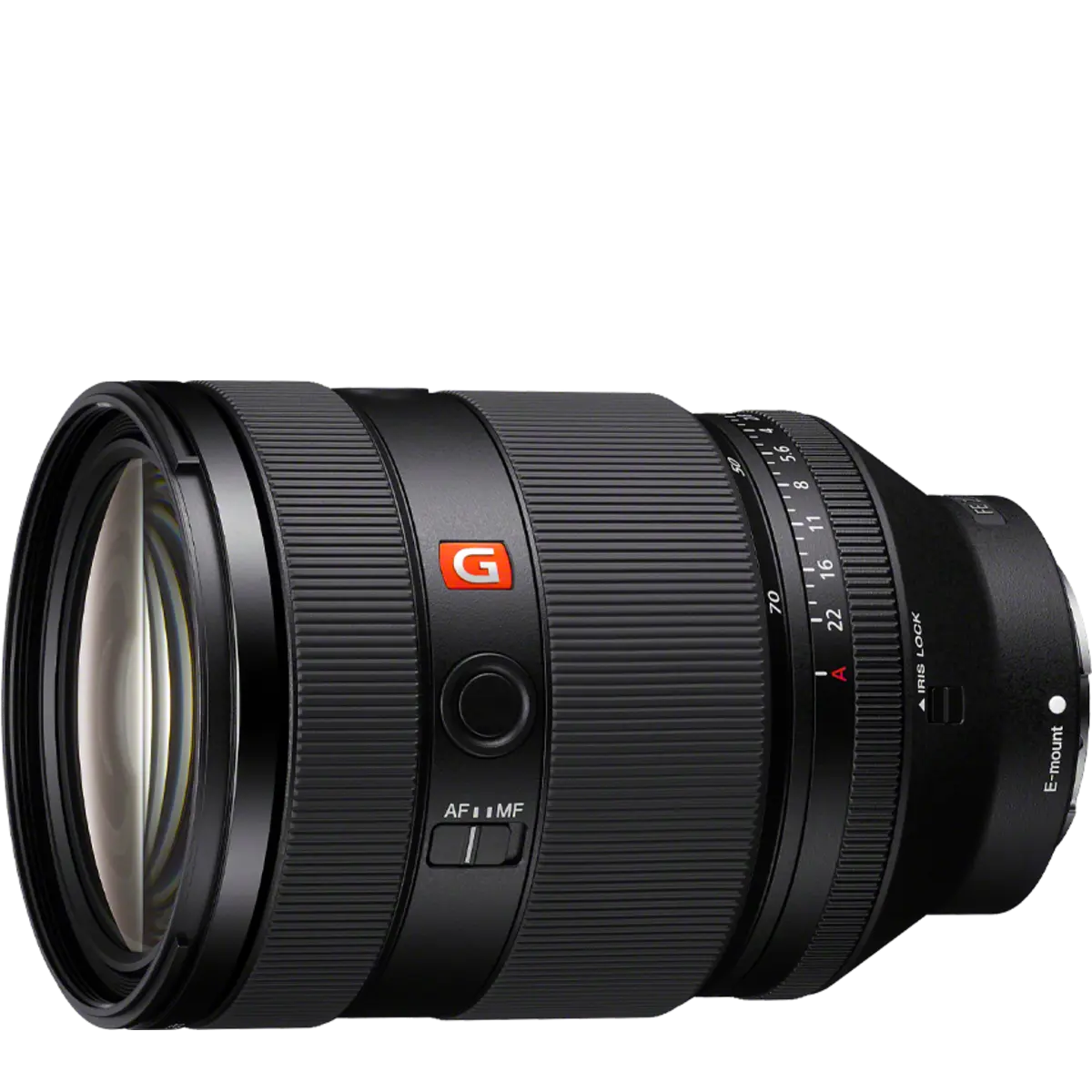
Best Sony lens
It loses a little at the wide-angle end, but more than makes up for it with a super-bright f/2 aperture.

Best Fujifilm X lens
It's at the premium end of the Fujifilm X offering, but boasting one of Fuji's red badges, you can't argue with the quality of this weather-sealed lens.
Load more ↴

Best L-mount lens
If you're using a full-frame L-mount camera from Panasonic, Leica or Sigma, this superb standard lens is an outstanding choice, offering an extra burst of telephoto reach.
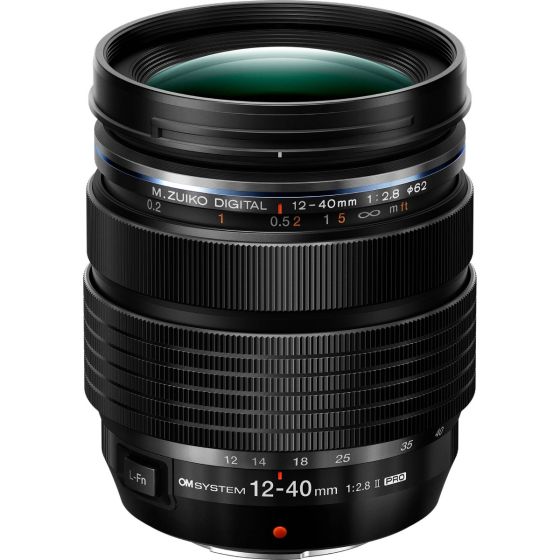
Best Micro Four Thirds lens
Pro by name, pro by nature, this hardy lens delivers sublime performance across its equivalent range of 24-80mm. The build is weather-sealed, with physical controls aplenty.
The best standard zoom lenses
Why you can trust Digital Camera World
Canon standard zooms
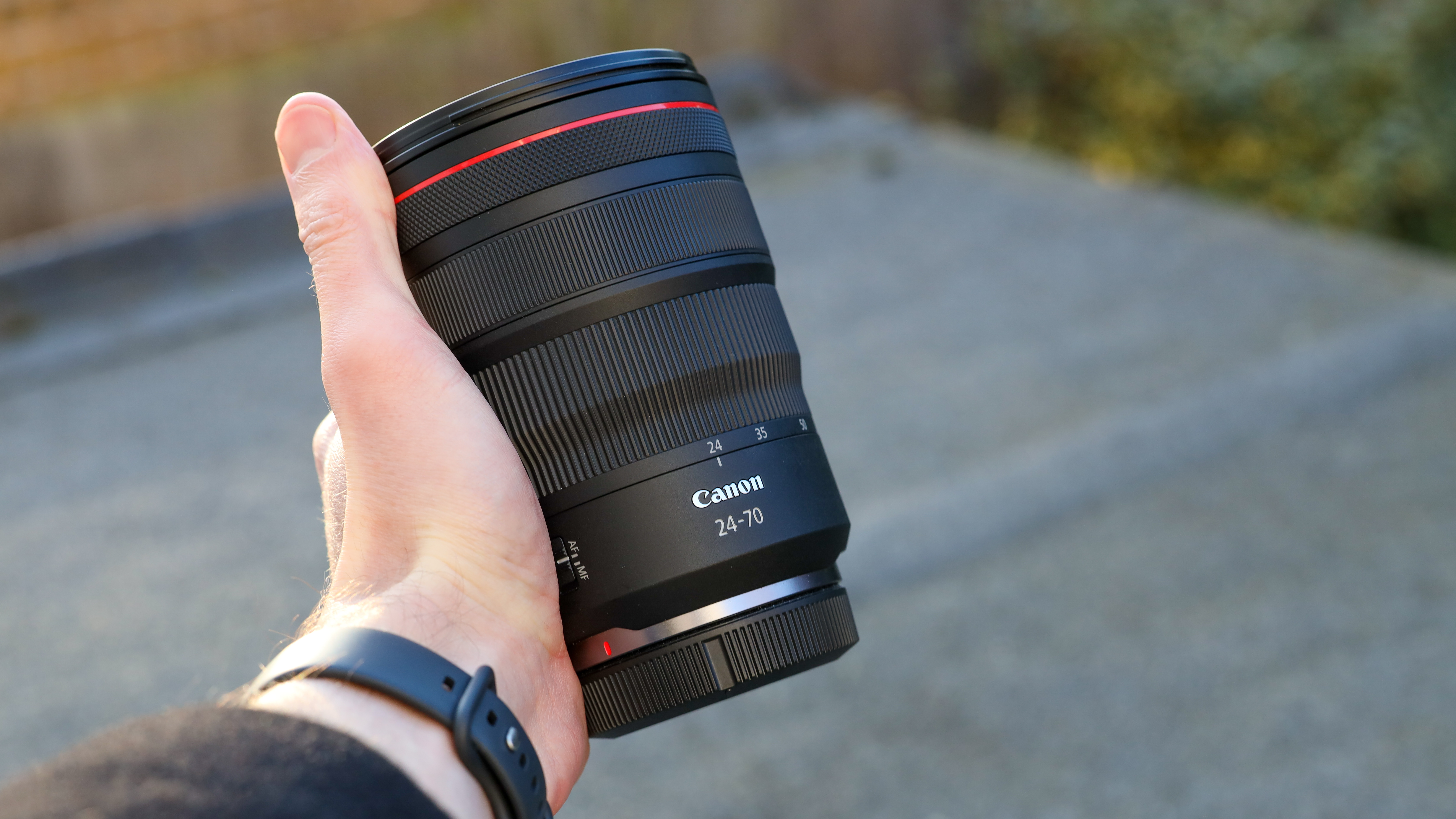
Specifications
Reasons to buy
Reasons to avoid
A bit bigger and weightier than the EF 24-70mm f/2.8 for Canon DSLR cameras, this RF mount lens for full-frame mirrorless Canons weighs in at 900g, and its 89x126mm dimensions dwarf an EOS R or RP body. It’s not just the build that’s big, as the asking price is far higher than for Canon’s pro-grade zoom for SLRs and almost 2.5x that of the RF 24-105mm.
Build quality is first class and comes complete with a full set of weather seals plus the now usual fluorine coating on the front and rear elements. The optical path includes no less than three molded aspherical elements and three UD elements, plus Air Sphere Coating. Handling is enhanced by a customizable control ring, there’s super-fast Nano USM autofocus and 5-stop image stabilization. As well as the ‘de-click’ option for the control ring, another bonus for serious videographers is that there’s virtually no focus breathing (a small change in focal length when adjusting the focus position). Furthermore, the minimum focus distance is impressively short at the minimum focal length, shrinking to just 0.21m.
Optical performance is superb, with stunning center sharpness throughout the entire zoom range, even when shooting wide open. It easily beats the EF 24-70mm f/2.8 in this respect, as well as giving a noticeable improvement in corner sharpness. Color fringing is reduced at short to medium zoom settings, as is barrel distortion at the short end. All in all, image quality is spectacular.
Read our full Canon RF 24-70mm f/2.8L IS USM review
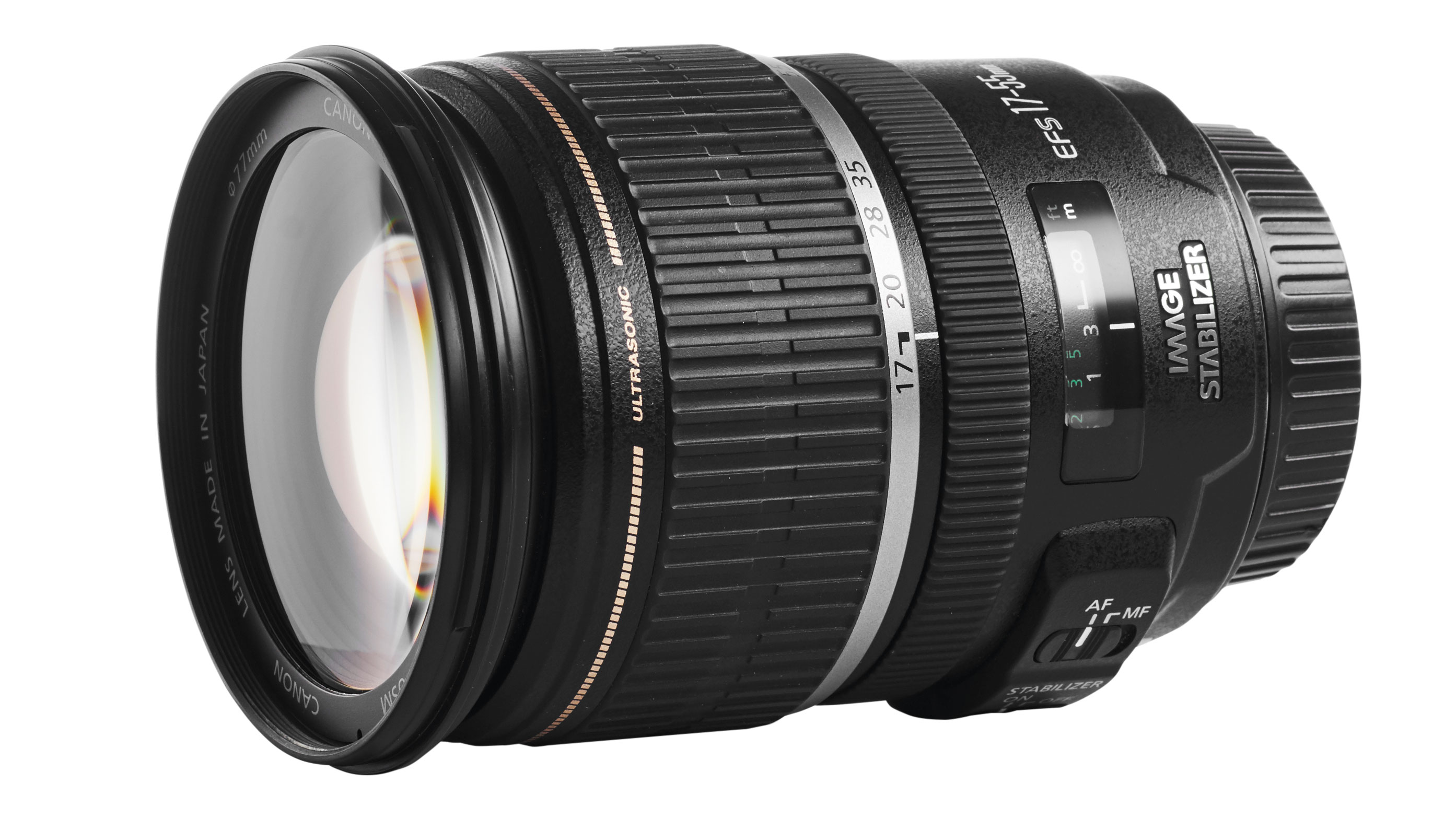
Specifications
Reasons to buy
Reasons to avoid
The closest thing that Canon has ever made to a pro-grade APS-C format lens, this one was originally launched back in 2006. Its starring attraction is a fast f/2.8 aperture rating that remains constant throughout the entire zoom range. Although the relatively fast, constant-aperture design is a bonus, the downside is that this is big and heavy for an APS-C format standard zoom. Even so, at 645g it’s still 160g lighter than the equivalent EF 24-70mm f/2.8 for full-frame SLRs.
With its gold ‘ultrasonic’ ring around the front, the lens has styling from a somewhat bygone era. Inside, the relatively old-generation image stabilizer only gives a 3-stop benefit. Canon has never made an L-series lens for APS-C format cameras but this one comes the closest. However, it still lacks weather seals and you need to buy the hood separately.
The ring-type ultrasonic autofocus system is fast and accurate, complete with the usual full-time manual override. Sharpness is noticeably better than from any other APS-C format lens in Canon’s current catalog, while color fringing and distortions are better controlled and bokeh is better.
Read our full Canon EF-S 17-55mm f/2.8 IS USM review
For more Canon options, see: The best Canon standard zoom lenses
Nikon standard zooms
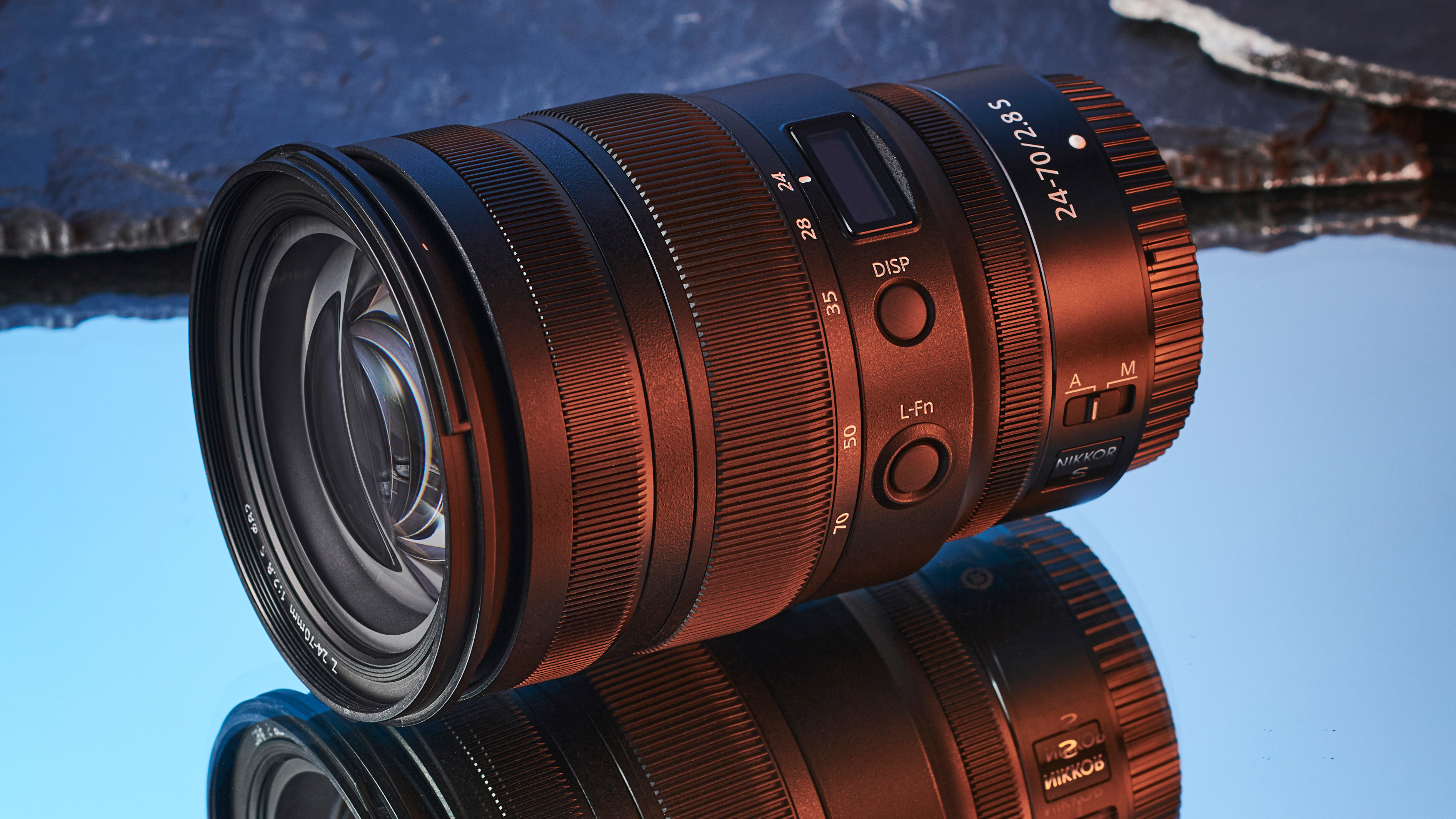
Specifications
Reasons to buy
Reasons to avoid
This upmarket f/2.8 zoom is hard to resist for mirrorless Z-mount Nikons. The optical design includes four aspherical elements, two ED elements, plus dual Nano Crystal and ARNEO coatings, which virtually banish ghosting and flare. Keep-clean fluorine coatings are added front and back, there’s an electromagnetically controlled diaphragm, and even multiple AF actuators to boost speed and accuracy.
Customizable extras include an additional control ring, an L-Fn (Lens Function) button and an OLED display. The last of these can show aperture setting, zoom position or focus distance, complete with depth of field indication. Suffice it to say, handling is a dream, and the lens is lighter than the equivalent AF-S zoom for Nikon SLRs.
As for performance, the Z 24-70mm f/4 lens is a tough act to follow but, this f/2.8 raises the bar even higher, with ace overall performance and image quality, more befitting a selection of best-in-class prime lenses. Center-sharpness is simply epic and it’s well maintained right out to the extreme corners of the frame. There’s virtually no color fringing at 24mm and even less at the mid-to-long zoom settings, while distortion is essentially non-existent.
Read our full Nikon Z 24-70mm f/2.8 S review

Specifications
Reasons to buy
Reasons to avoid
Measuring 155mm in length, this is one of the biggest standard zoom lenses on the market, and it weighs over a kilogram. You’d be forgiven for assuming it had an internal zoom, but it extends even further at both ends of the zoom range.
Completely redesigned a few years ago, this edition adds 4-stop stabilization whereas the previous incarnation had none. It also gains a new optical design, incorporating four ED elements, an HRI (High Refractive Index) element, Nano Crystal Coat, plus fluorine coatings on the front and rear elements of the lens. The 9-blade diaphragm is also upgraded with electromagnetic control.
The lens is capable of magnificent results but proved uninspiring in our lab tests. It loses out to full-frame Z-mount standard zooms for sharpness and has much more noticeable color fringing, distortions and vignetting.
Read our full Nikon AF-S 24-70mm f/2.8E ED VR review
For more Nikon options, see: The best Nikon standard zoom lenses
Sony standard zooms
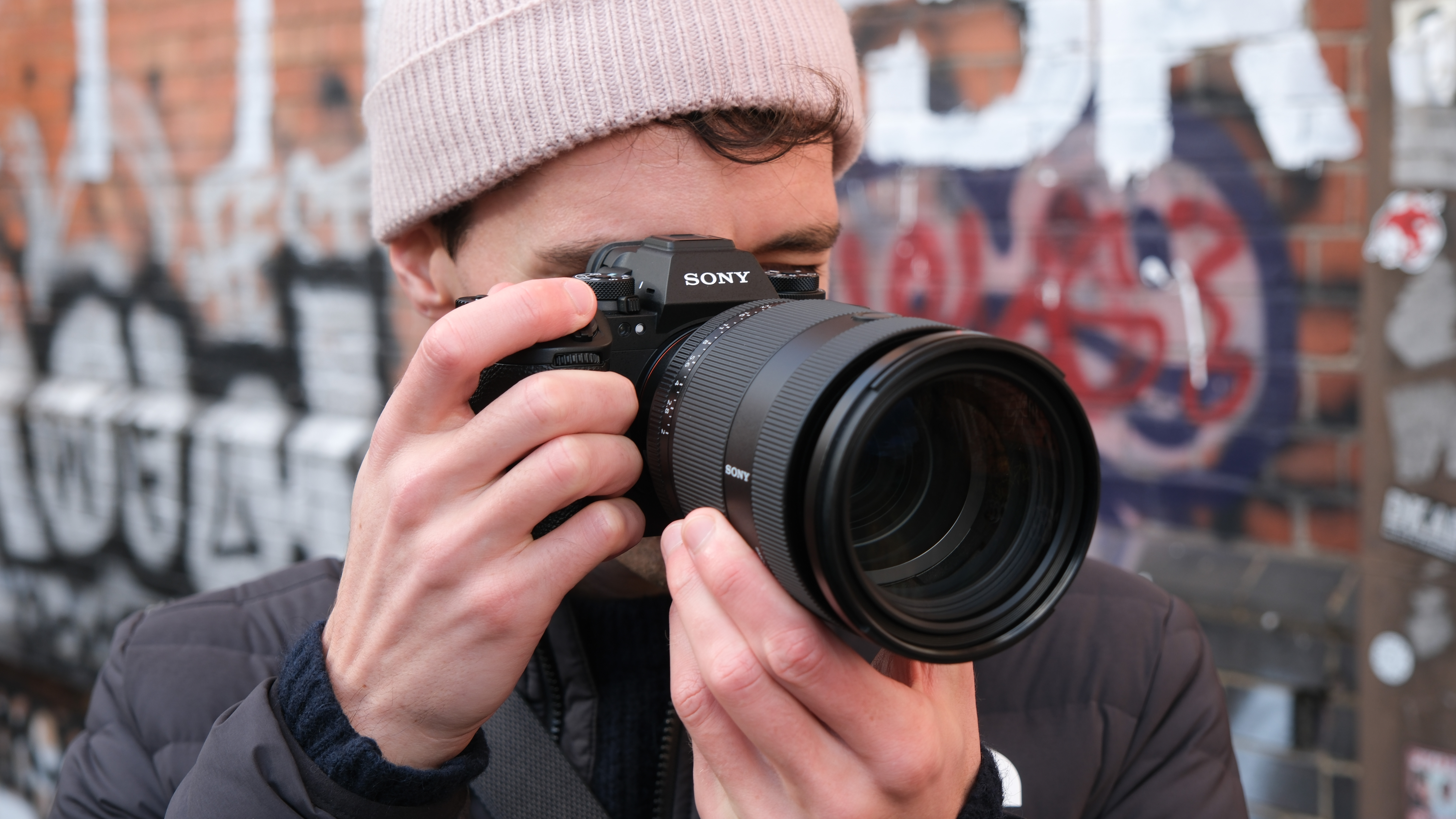
Specifications
Reasons to buy
Reasons to avoid
The Sony FE 28-70mm f/2 GM lens goes a whole stop faster than most fast standard zooms, with an f/2 constant aperture, though it does lose out a little at the wide-angle end, with a 28mm rather than the more usual 24mm starting focal length.
It's reasonably lightweight considering the oversized max aperture, tipping the scales at (just) under a kilogram, which makes it suitable for all-day carry. It boasts two customizable focus lock buttons, an aperture/iris ring with a lock switch, a switch to adjust the zoom ring's feel, and an AF/MF switch.
The image quality is exceptional, with superb sharpness and no noticeable vignetting or chromatic aberrations. Autofocus is quick and silent, and it's a versatile lens for all manner of shooting situations. However, the hefty price tag limits this to well-heeled professionals who require the widest aperture in a standard zoom, regardless of size or cost.
Read our full Sony FE 28-70mm f/2.8 GM review
Fujifilm standard zooms
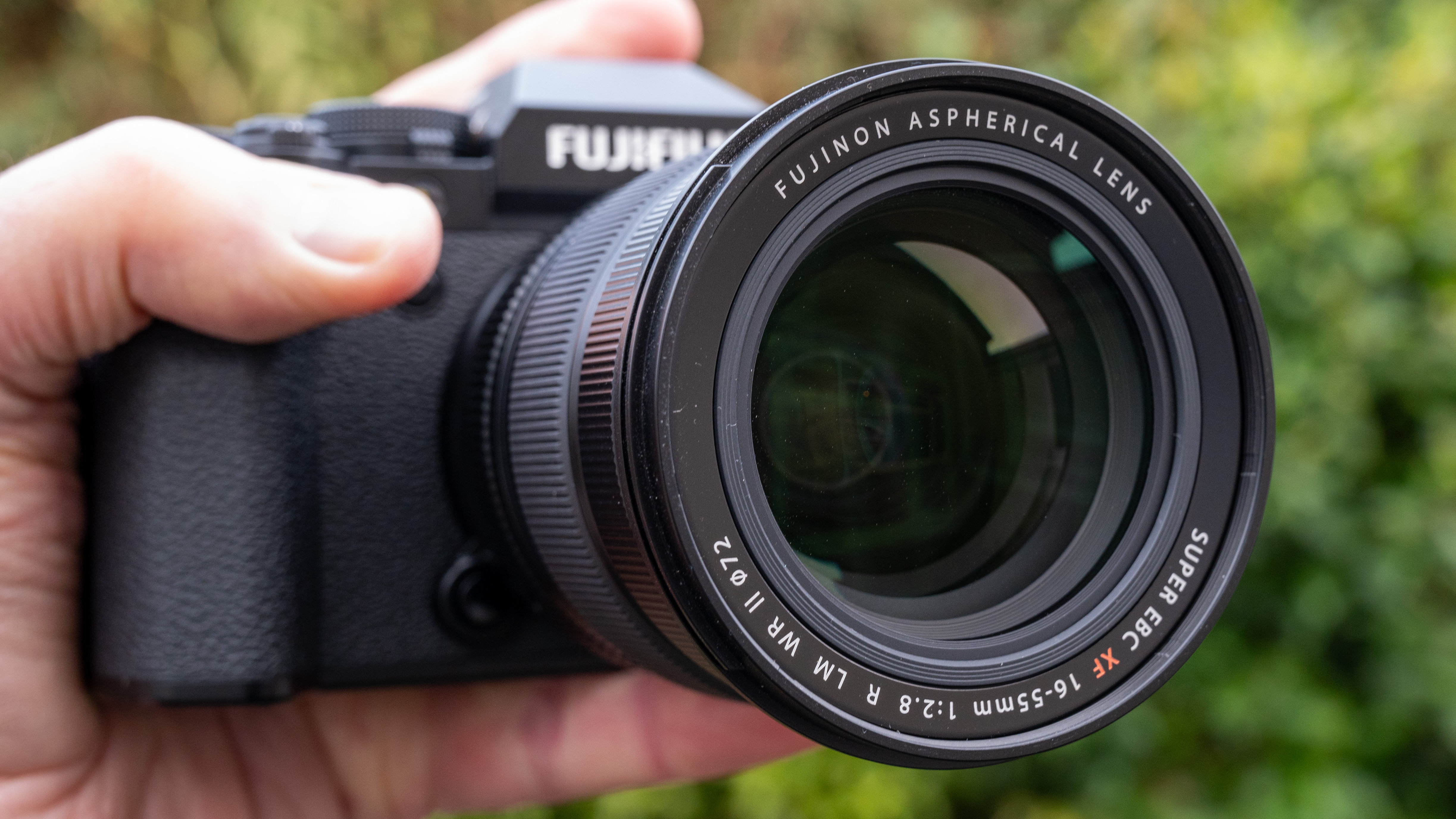
Specifications
Reasons to buy
Reasons to avoid
The Fujifilm XF 16-55mm f/2.8 R LM WR II lens is smaller, lighter, and better performing than its predecessor, particularly in resolving power, to suit Fujifilm's latest 40MP cameras.
The lens boasts a compact build, enhanced image quality, and a click/de-click aperture ring (a first for Fujifilm lenses), providing tactile feedback for precise aperture adjustments when shooting stills, while also offering the option for smooth, silent aperture transitions during video recording. It maintains a constant f/2.8 aperture throughout its 24-84mm equivalent zoom range, enabling consistent exposure and shallow depth of field across the zoom range. The Mark II lens has 11 diaphragm blades, improving upon the original's nine, for smoother and more aesthetically pleasing bokeh. Its optical design includes three ED elements, one Super ED element, and four aspherical elements, effectively minimizing aberrations and maximizing image clarity and sharpness.
However, the absence of optical stabilization could limit handheld shooting in low-light conditions or at longer focal lengths. Lab tests confirm that this lens offers improved sharpness and color fringing control compared to the original, though distortion is more pronounced and heavily reliant on in-camera correction.
Read our full Fujifilm XF 16-55mm f/2.8 R LM WR II review
L-mount standard zooms

Specifications
Reasons to buy
Reasons to avoid
A 24-70mm f/2.8 standard zoom is a mainstay of the professional photographer, as evidenced by the many, many examples on this list. However, with this L-mount and Sony FE lens, Sigma is making a bet that you might be willing to consider something different. Namely, losing 4mm of play at the wide end but gaining 35mm at the long end, giving you much more telephoto power. If you often find yourself at the outer edge of your 24-70mm zoom, this has likely caught your attention already.
In testing, I was impressed by this lens. It's big and heavy, as is unavoidable for a full-frame lens of this type, but it handles well with a smooth zooming action. Autofocusing is smooth and reliable, and sharpness/clarity are superb. The 12-blade aperture also does an excellent job producing good-looking bokeh, with the f/2.8 aperture making it easy to throw out the background when desired.
Read our full Sigma 28-105mm F2.8 DG DN | Art review
Micro Four Thirds standard zooms
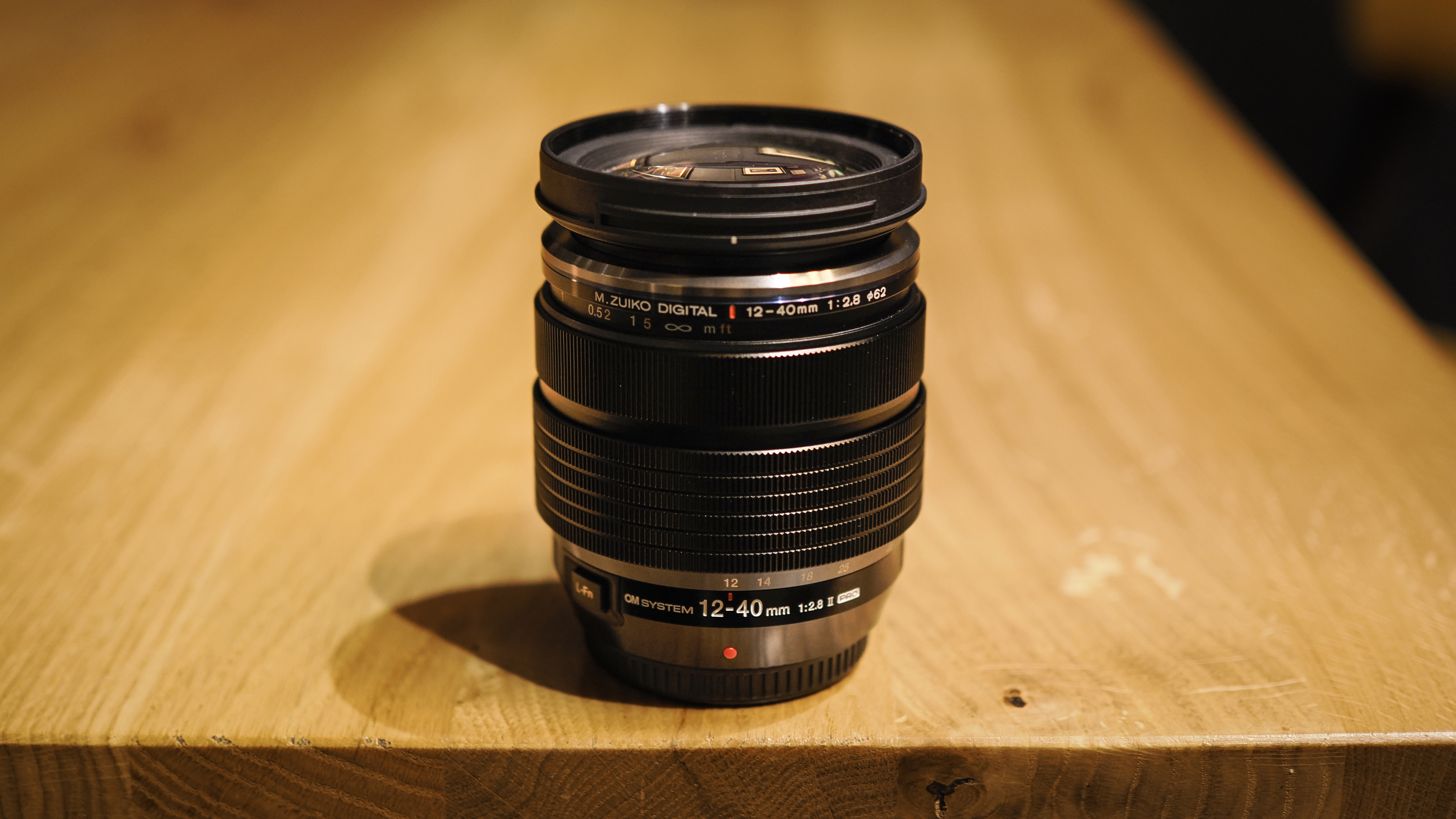
Specifications
Reasons to buy
Reasons to avoid
Coming in at three times the price of Olympus's 14-42mm f/3.5-5.6 EZ Pancake lens and four times the weight, this is very much the pro-grade big brother for Micro Four Thirds cameras. Indeed, the constant f/2.8 aperture rating makes this lens two f-stops faster than the Olympus pancake zoom at the long end of the zoom range. The weather-sealed build quality is excellent, while handling luxuries include a physical focus distance scale and a neat customizable Lens-Function button.
Optical highlights include two aspherical, one dual surface aspherical, one ED aspherical , two ED and two HR elements, along with Olympus's Zero coating. Sharpness and contrast proved excellent in our real-world testing – this lens delivers pictorially gorgeous results.
Read our full Olympus M.Zuiko Digital ED 12-40mm f/2.8 Pro review
How to choose a standard zoom lens
Designed for day-to-day shooting, a good standard lens will cover a focal range that provides a relatively natural perspective, neither too wide nor too long. They're often bundled in with cameras as a starter lens – though there are much better standard zooms out there than these ones.
The kit zooms that come with most mirrorless cameras and DSLRs , while decent enough, tend to be made with a focus on affordability. This often means a plastic mounting plate, a lack of advanced features like weather seals, and fairly slow maximum aperture ratings.
Upgrading to a better class of standard zoom lens means you get more robust build quality, and better overall performance thanks to superior internal optics. While this does generally mean carting around a bigger lens without a retractable design, and paying more for the privilege, the results are worth it in terms of sheer image quality.
If you're using a camera with a sensor smaller than full-frame (i.e. APS-C or Four Thirds) then it's important to remember the crop factor, which extends the effective focal length of your lens. The crop factor of APS-C is 1.5x (or 1.6x in the case of Canon), while the Micro Four Thirds crop factor is 2x. So, a 16-80mm lens mounted to an APS-C camera will deliver an effective focal length of 24-120mm, and on a Micro Four Thirds camera, 32-160mm. While this makes it more difficult to achieve a wide-angle perspective, it does mean you can get a telephoto-like perspective from a lens that's much lighter and cheaper than its full-frame equivalent would be.
How we test lenses
We test lenses using both real world sample images and lab tests. Our lab tests are carried out scientifically in controlled conditions using the Imatest testing suite, which consists of custom charts and analysis software that measures resolution in line widths/picture height, a measurement widely used in lens and camera testing. We find the combination of lab and real-word testing works best, as each reveals different qualities and characteristics. See more on how we test and review at Digital Camera World.
Get the Digital Camera World Newsletter
The best camera deals, reviews, product advice, and unmissable photography news, direct to your inbox!
Matthew Richards is a photographer and journalist who has spent years using and reviewing all manner of photo gear. He is Digital Camera World's principal lens reviewer – and has tested more primes and zooms than most people have had hot dinners!
His expertise with equipment doesn’t end there, though. He is also an encyclopedia when it comes to all manner of cameras, camera holsters and bags, flashguns, tripods and heads, printers, papers and inks, and just about anything imaging-related.
In an earlier life he was a broadcast engineer at the BBC, as well as a former editor of PC Guide.
- Adam WaringGuides Editor
